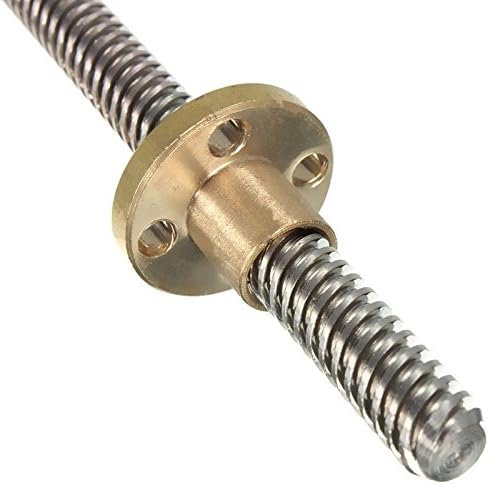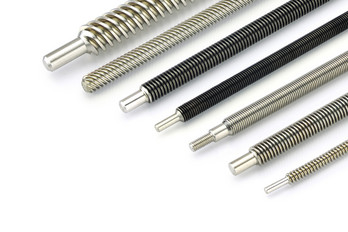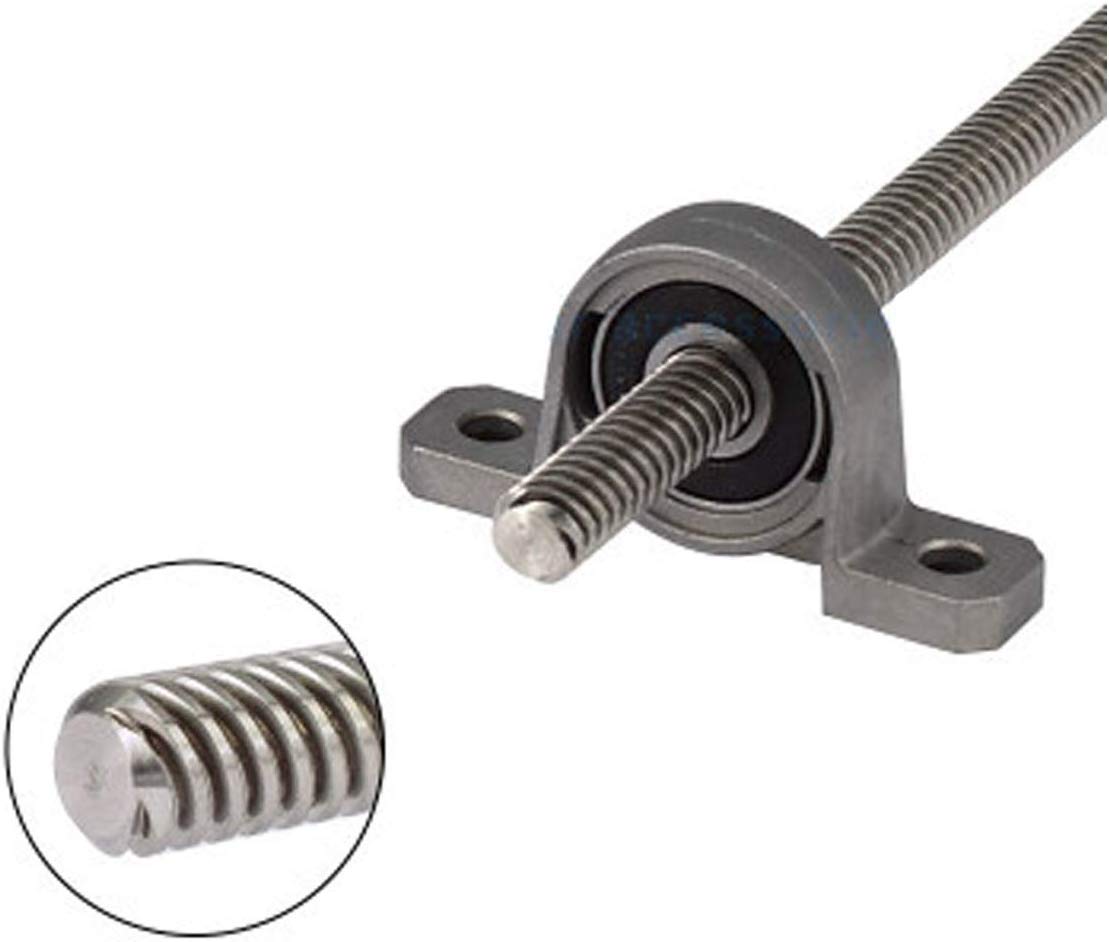Product Description
SFU1204-4 SFU1604-4 SFU1605-3 SFU1605-4 SFU1610-3/2 SFU2005-3 SFU2005-4 SFU2571-3/2 SFU2505-3 SFU2505-4 SFU2510-4 SFU2510-4/2 SFU3205-4 SFU3206-4 SFU3210-4 SFU4005-4 SFU4571-4 SFU5005-4 SFU5571-4 SFU5571-4 SFU6310-4 SFU6320-4 SFU8571-4 SFU8571-6 SFU8571-4 SFU1571-4
DFU1604-4 DFU1605-3 DFU1605-4 DFU1610-3/2 DFU2005-3 DFU2005-4 DFU2571-3/2 DFU2505-3 DFU2505-4 DFU2510-4 DFU2510-4/2 DFU3205-4 DFU3206-4 DFU3210-4 DFU4005-4 DFU4571-4 DFU5005-4 DFU5571-4 DFU5571-4 DFU6310-4 DFU6320-4 DFU8571-4 DFU8571-6 DFU8571-4 DFU1571-4
SFE1616-3 SFE1616-6 SFE1632-3 SFE1632-6 SFE2571-3 SFE2571-6 SFE2040-3 SFE2040-6 SFE2525-3 SFE2525-6 SFE2550-3 SFE2550-6 SFE3232-3 SFE3232-6 SFE3264-3 SFE3264-6 SFE4040-3 SFE4040-6 SFE5050-3 SFE5050-6
SFT2505-5 SFT2510-2.5 SFT3205-5 SFT3206-5 SFT3208-5 SFT3210-5 SFT3220-2.5 SFT4005-5 SFT4571-5 SFT4571-2.5 SFT5571-5 SFT5571-2.5 SFT6310-5 SFT6320-2.5 SFT8571-5 SFT8571-5 SFT8571-7.5
SFS01205-2.8 SFS01210-2.8 SFS01605-3.8 SFS01610-2.8 SFS01616-1.8 SFS01616-2.8 SFS01620-1.8 SFS57105-3.8 SFS57171-3.8 SFS57120-1.8 SFS57120-2.8 SFS57105-3.8 SFS57110-3.8 SFS57125-1.8 SFS57125-2.8 SFS03205-3.8 SFS03210-3.8 SFS03220-2.8 SFS03232-1.8 SFS03232-2.8 SFS04005-3.8 SFS5711-3.8 SFS5711-2.8 SFS04040-1.8 SFS04040-2.8 SFS05005-3.8 SFS 0571 1-3.8 SFS 0571 1-3.8 SFS05050-1.8 SFS05050-2.8
SFY01616-3.6 SFY57120-3.6 SFY57125-3.6 SFY03232-3.6 SFY04040-3.6 SFY05050-3.6 SFY01632-1.6 SFY57140-1.6 SFY57150-1.6 SFY03264-1.6 SFY04080-1.6 SFY 0571 10-1.6
SFI1604-4 SFI1605-4 SFI1610-3 SFI2004-4 SFI2005-4 SFI2504-4 SFI2505-4 SFI255T-4 SFI2510-4 SFI3204-4 SFI3205-4 SFI3210-4 SFI4005-4 SFI4571-4 SFI5571-4 SFI6310-4 SFI8571-4
)
SFC3 SFC4 SFC5 SFC6 SFC8 SFC10 SFC12 SFC13 SFC16 SFC20 SFC25 SFC30 SFC35 SFC40 SFC50 SFC60 SFC80 SFC100 SFC120 SFC150
TFC3 TFC4 TFC5 TFC6 TFC8 TFC10 TFC12 TFC13 TFC16 TFC20 TFC25 TFC30 TFC35 TFC40 TFC50 TFC60 TFC80 TFC100 TFC120 TFC150
FLM6 FLM8 FLM10 FLM12 FLM13 FLM16 FLM20 FLM25 FLM30 FLM35 FLM38 FLM40 FLM50 FLM60 FLM80 FLM100
LM16 LM20 LM25 LM30 LM35 LM40 LM50 LM60 LM80 LM100
SV3050-7Z SV3075-10Z SV3100-14Z SV3125-17Z SV3150-21Z SV3175-24Z SV3200-28Z SV3225-31Z SV3250-35Z SVS3275-38Z SV3300-42Z SV3325-45Z SV3350-49Z SV4080-7Z SV4120-11Z SV4160-15Z SV41-200-19Z SV4240-23Z SV4280-27Z SV4320-31Z SV4360-35Z SV4400-39Z SV4440-43Z SV4480-47Z SVS3050-7Z SVS3075-10Z SVS3100-14Z SVS3125-17Z SVS3150-21Z SVS3175-24Z SVS3200-28Z SVS3225-31Z SVS3250-35Z SVS3275-38Z SVS3300-42Z SV3325-45Z SVS3350-49Z SVS4080-7Z SVS4120-11Z SVS4160-15Z SVS41-200-19Z SVS4240-23Z SVS4280-27Z SVS4320-31Z SVS4360-35Z SVS4400-39Z SVS4440-43Z SVS4480-47Z
SV6100-8Z SV6150-12Z SV6200-16Z SV6250-20Z SV6300-24Z SV6350-28Z SV6400-32Z SV6450-36Z SV6500-40Z SV6600-49Z SV9200-10Z SV9300-15Z SV9400-20Z SV9500-25Z SV9600-30Z SV9700-35Z SV9800-40Z SV9900-45Z SVS91000-50Z SVS6100-8Z SVS6150-12Z SVS6200-16Z SVS6250-20Z SVS6300-24Z SVS6350-28Z SVS6400-32Z SVS6450-36Z SVS6500-40Z SVS6600-49Z SVS9200-10Z SVS9300-15Z SVS9400-20Z SVS9500-25Z SVS9600-30Z SVS9700-35Z SVS9800-40Z SVS9900-45Z SVS91000-50Z SV12300-10Z SV12400-14Z SV12500-17Z SV12600-21Z SV12700-24Z SV12800-28Z SV12900-31Z SV121000-34Z SV121100-38Z SV121200-42Z SVS12300-10Z SVS12400-14Z SVS12500-17Z SVS12600-21Z SVS12700-24Z SVS12800-28Z SVS12900-31Z SVS121000-34Z
SVW1571-5Z SVW1030-7Z SVW1040-10Z SVW1050-13Z SVW1060-16Z SVW1070-19Z SVW1080-21Z SVW2030-5Z SVW2045-8Z SVW2060-11Z SVW2075-13Z SVW2090-16Z SVW2105-18Z SVW2120-21Z SVW3050-7Z SVW3075-10Z SVW3100-14Z SVW3125-17Z SVW3150-21Z SVW3175-24Z SVW3200-28Z SVW4080-7Z SVW4120-11Z SVW4160-15Z SVW4200-19Z SVW4240-23Z SVW4280-27Z SVWS1571-5Z SVWS1030-7Z SVWS1040-10Z SVWS1050-13Z SVWS1060-16Z SVWS1070-19Z SVWS1080-21Z SVWS2030-5Z SVWS2045-8Z SVWS2060-11Z SVWS2075-13Z SVWS2090-16Z SVWS2105-18Z SVWS2120-21Z SVWS3050-7Z SVWS3075-10Z SVWS3100-14Z SVWS3125-17Z SVWS3150-21Z SVWS3175-24Z SVWS3200-28Z SVWS4080-7Z SVWS4120-11Z SVWS4160-15Z SVWS4200-19Z SVWS4240-23Z SVWS4280-27Z
OUR PROMISES
Product quality standards are guaranteed. Our products have got ISO 9001 & CE international quality management system. They all produced with best advanced technology.We are proactive and we offer only products complying with top standards of quality and warranty
.
/* January 22, 2571 19:08:37 */!function(){function s(e,r){var a,o={};try{e&&e.split(“,”).forEach(function(e,t){e&&(a=e.match(/(.*?):(.*)$/))&&1
| Rolling Body: | Roller Bearings |
|---|---|
| The Number of Rows: | Multi-column |
| Outer Dimension: | Small (28-55mm) |
| Material: | Bearing Steel |
| Spherical: | Non-Aligning Bearings |
| Load Direction: | Radial Bearing |
| Samples: |
US$ 1/Piece
1 Piece(Min.Order) | |
|---|
| Customization: |
Available
|
|
|---|

How does the design of lead screws impact their performance in different environments?
The design of lead screws plays a crucial role in determining their performance in different environments. Lead screws are mechanical devices used to convert rotational motion into linear motion. They consist of a screw (also known as the lead screw or power screw) and a nut that engages with the screw’s threads. The performance of lead screws can be influenced by various design factors, including the thread profile, lead angle, material selection, and lubrication.
Thread Profile: The thread profile of a lead screw refers to the shape of the threads on the screw and nut. Common thread profiles include square, Acme, and ball screw. The choice of thread profile affects the efficiency, backlash, and load-carrying capacity of the lead screw. For example, ball screws generally offer higher efficiency and lower backlash compared to square or Acme threads, making them suitable for applications requiring high precision and efficiency.
Lead Angle: The lead angle of a lead screw is the angle between the helix and the axis of the screw. It determines the linear distance traveled by the nut for each revolution of the screw. Lead angle influences the mechanical advantage, speed, and load-carrying capacity of the lead screw. Steeper lead angles provide higher mechanical advantage but may reduce the speed and load capacity. Shallower lead angles, on the other hand, offer higher speed but lower mechanical advantage.
Material Selection: The choice of materials for lead screws depends on the specific environmental conditions and application requirements. Factors such as mechanical strength, wear resistance, corrosion resistance, and temperature resistance need to be considered. Common materials for lead screws include stainless steel, carbon steel, and bronze. Stainless steel is often preferred for its corrosion resistance, while bronze may be chosen for its self-lubricating properties.
Lubrication: Proper lubrication is essential for the smooth operation and longevity of lead screws. Lubricants reduce friction and wear between the screw and nut, improving efficiency and reducing the chances of seizing or galling. The selection of lubricants depends on the operating conditions, such as temperature, speed, and load. For high-temperature environments, specialized high-temperature lubricants may be required.
In different environments, the design considerations for lead screws may vary. For example:
- In high-temperature environments, the selection of materials with high-temperature resistance becomes critical to prevent premature failure or deformation of the lead screw.
- In corrosive environments, materials with good corrosion resistance, such as stainless steel or specialized coatings, should be chosen to protect the lead screw from chemical degradation.
- In applications where precision is crucial, such as CNC machines or robotics, lead screws with low backlash and high efficiency, such as ball screws, are often preferred.
In summary, the design of lead screws, including thread profile, lead angle, material selection, and lubrication, significantly impacts their performance in different environments. It is important to consider the specific requirements of the application and environmental conditions to choose the most suitable lead screw design for optimal performance and longevity.

How do electronic or computer-controlled components integrate with lead screws in modern applications?
In modern applications, electronic or computer-controlled components play a crucial role in integrating with lead screws to enhance functionality, precision, and automation. These components enable advanced control, monitoring, and feedback capabilities, allowing for more efficient and accurate operation of systems incorporating lead screws. Here are some ways electronic or computer-controlled components integrate with lead screws in modern applications:
- Position Control: Electronic control systems can precisely control the position of the lead screw by monitoring and adjusting the rotational movement of the motor driving the screw. Position feedback sensors, such as encoders or linear scales, provide real-time information about the screw’s position, allowing the control system to accurately position the load. This integration enables precise positioning and highly repeatable motion control in applications such as CNC machinery, 3D printers, or robotic systems.
- Speed and Velocity Control: Electronic control systems can regulate the speed and velocity of the lead screw by controlling the motor’s rotational speed. By adjusting the motor speed, the control system can achieve specific linear speeds or velocity profiles along the length of the lead screw. This integration is particularly useful in applications where controlled acceleration, deceleration, or dynamic speed changes are required, such as automated manufacturing processes or motion control systems.
- Force and Torque Control: In some applications, it is necessary to control the force or torque applied by the lead screw. Electronic control systems can monitor and adjust the motor’s current or voltage to regulate the applied force or torque. This integration allows for precise force control, load balancing, or torque limiting in applications such as material testing machines, automated assembly systems, or lifting mechanisms.
- Automation and Synchronization: Electronic or computer-controlled components facilitate the automation and synchronization of multiple lead screws or other mechanical components. Through centralized control, these components can coordinate the movements of multiple lead screws, ensuring precise and synchronized motion. This integration is commonly used in complex systems with multiple axes of motion, such as multi-axis CNC machines or robotic systems.
- Monitoring and Diagnostics: Electronic control systems can monitor the operating parameters of lead screws, such as temperature, vibration, or load conditions. By integrating sensors and monitoring algorithms, the control system can detect abnormal conditions, provide real-time feedback, and trigger appropriate actions, such as alerting maintenance personnel or implementing protective measures. This integration enhances system reliability, prevents failures, and enables predictive maintenance in applications where lead screw performance is critical.
- Human-Machine Interface (HMI): Electronic or computer-controlled components often provide a user interface through which operators can interact with the lead screw system. HMIs allow operators to input commands, monitor system status, and receive feedback. This integration simplifies system operation, enables parameter adjustments, and facilitates troubleshooting or diagnostics.
In summary, electronic or computer-controlled components play a vital role in integrating with lead screws in modern applications. Position control, speed and velocity control, force and torque control, automation and synchronization, monitoring and diagnostics, and human-machine interface capabilities enhance the functionality, precision, and automation of systems incorporating lead screws. This integration enables advanced control, improved performance, and enhanced operational capabilities in various industries and applications.

How does a lead screw differ from other types of screws in terms of design and functionality?
A lead screw differs from other types of screws in terms of its design and functionality. Here’s a detailed explanation of the distinctions between lead screws and other screw types:
- Thread Design: Lead screws have a helical thread design, meaning the threads wrap around the screw’s cylindrical shaft in a continuous spiral. This helical thread allows for the conversion of rotary motion into linear motion. In contrast, other types of screws, such as machine screws or wood screws, typically have a straight or tapered thread design suited for fastening or joining applications.
- Linear Motion Conversion: The primary function of a lead screw is to convert rotary motion into linear motion or vice versa. It achieves this by utilizing the engagement between the helical threads on the screw and the matching threads on the nut. This capability makes lead screws suitable for applications requiring precise positioning, actuation, or adjustment of components along a linear path. In contrast, other screws are primarily used for fastening, joining, or securing objects together.
- Precision and Control: Lead screws offer precise control over linear movement due to their thread pitch and the ability to rotate the screw with precision. The pitch determines the linear distance the nut will travel for each revolution of the screw. This feature makes lead screws well-suited for applications that demand accurate positioning or adjustment. In contrast, other screws are not designed with the same level of precision or control over linear motion.
- Load Handling: Lead screws are designed to handle both axial loads (tension or compression forces) and torque. The helical threads and the engagement between the screw and nut distribute the load over a larger surface area, allowing lead screws to support and transfer significant loads. Other screw types, such as machine screws or wood screws, are primarily used for fastening and may not have the same load-bearing capabilities as lead screws.
- Applications: Lead screws find applications in various mechanical systems that require precise linear motion, such as CNC machines, 3D printers, robotic systems, and adjustable mechanisms. They are commonly used for positioning, actuation, or adjustment purposes. Conversely, other types of screws serve different purposes, such as machine screws used for fastening components together, wood screws for joining wooden materials, or self-tapping screws for creating threads in materials like metal or plastic.
Overall, the key differences between lead screws and other types of screws lie in their thread design, their ability to convert rotary motion to linear motion, the precision and control they offer, their load-handling capabilities, and the specific applications they are designed for. Understanding these distinctions is essential when selecting the appropriate screw type for a particular mechanical application.


editor by CX 2024-04-11